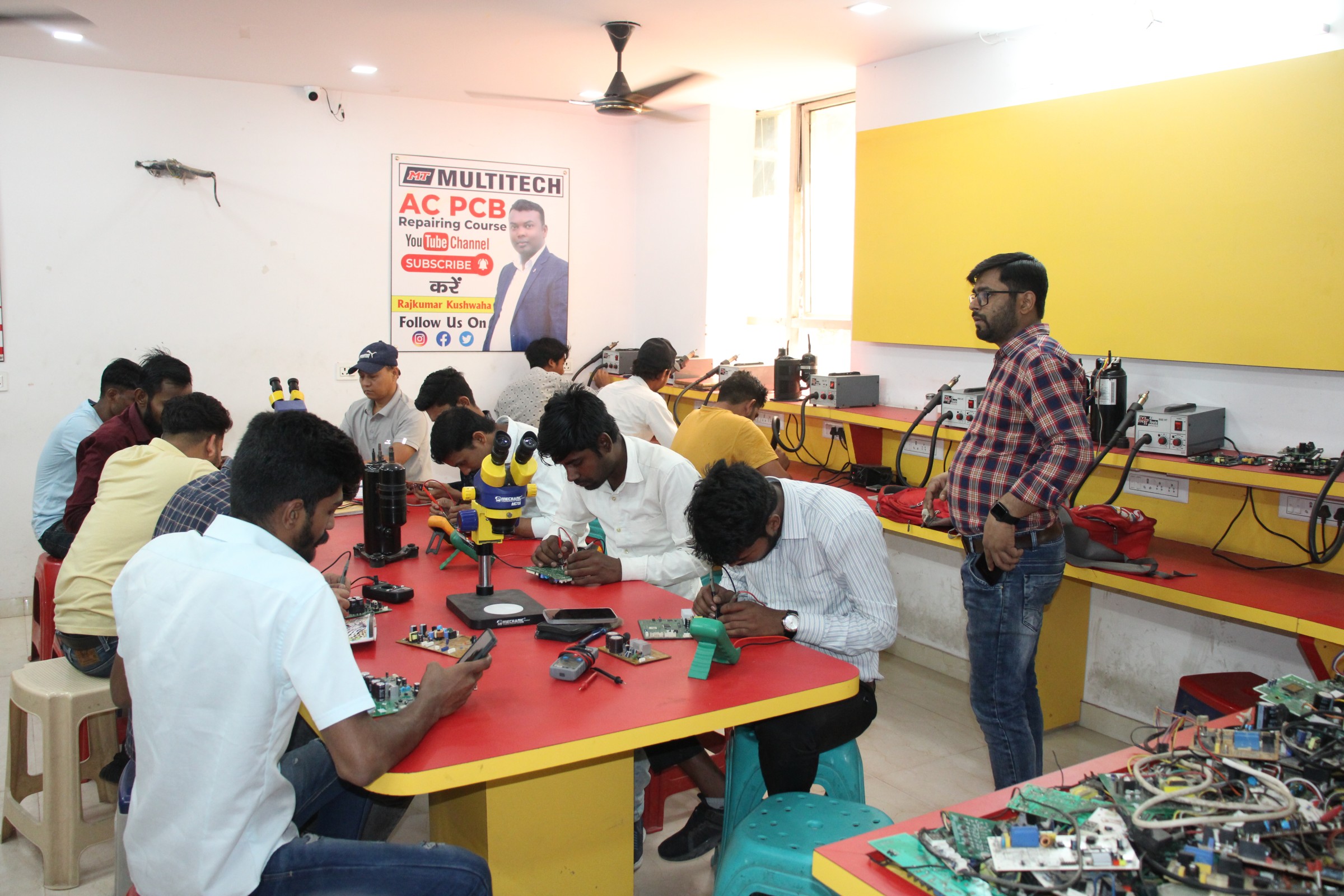
AC PCB Repairing Course: Build Your Knowledge
Modern air conditioning units have evolved to become more complex, incorporating advanced electronic components. These components, including the Printed Circuit Board (PCB), are essential for the efficient operation of the system. Recognizing the importance of an AC PCB repairing Course is crucial to ensure the longevity and performance of your air conditioner.
The Benefits of Learning AC PCB Repairing:
Learning how to repair AC PCBs is not just a valuable skill; it’s a smart investment. By understanding how the PCB functions and how to fix it, you can save money on repair services, troubleshoot issues on your own, and even open doors to new career opportunities in the field of air conditioning maintenance.
What is AC PCB Repairing?
The AC PCB serves as the central control unit of your air conditioning system. It coordinates various components like the compressor, fan, and thermostat, ensuring that your AC functions optimally. Without a properly functioning PCB, your unit may not cool or heat effectively, leading to discomfort and higher energy bills.
The Need for PCB Repairing:
Over time, AC PCBs can develop issues due to wear and tear, electrical surges, or manufacturing defects. These issues can disrupt the functionality of your air conditioner and may result in costly repairs or replacements. PCB repairing addresses these problems, saving you money and preventing unnecessary waste.
The Basics of AC PCB Repairing
Components of AC PCB:
AC PCBs consist of microchips, capacitors, diodes, and various other electronic components. Understanding each part’s function is crucial for effective troubleshooting and repair. Microchips, for instance, are responsible for processing signals and instructions, while capacitors store and release electrical energy.
Tools Required for AC PCB Repair:
To embark on a successful PCB repair journey, you’ll need essential tools. A soldering iron is vital for securing electronic components, a multimeter helps in diagnosing issues, and a magnifying glass aids in precise work. Familiarizing yourself with these tools is fundamental for a smooth repair process.
Steps to Master AC PCB Repairing
Step 1: Safety Precautions:
When working with electronic components, safety is paramount. Always disconnect the power source and discharge any residual energy to prevent accidents. Wearing safety gear, such as gloves and safety glasses, is also recommended.
Step 2: Identifying PCB Components:
Begin by learning to recognize and understand the functions of various PCB components. This knowledge will help you pinpoint issues and take appropriate action.
Step 3: Troubleshooting Common AC PCB Issues:
Common issues like loose connections, burnt components, or faulty soldering can disrupt PCB functionality. Gaining the skills to diagnose and rectify these problems is essential.
Step 4: Soldering and Desoldering Techniques:
Mastering soldering and desoldering techniques ensures that you can replace damaged components without compromising the PCB’s integrity.
Step 5: Replacing Faulty Components:
Learn how to replace damaged or faulty components with new ones, ensuring that the PCB functions effectively.
Step 6: Testing and Quality Assurance:
After the repair, rigorous testing is critical to ensure the PCB functions correctly. Quality assurance practices guarantee that the air conditioning unit operates smoothly.
Benefits of AC PCB Repairing Course
Skill Development:
Enrolling in an AC PCB repairing course enhances your technical skills, making you proficient in repairing and maintaining air conditioning units. These skills can be applied both at home and in a professional capacity.
Cost Savings:
By repairing PCBs yourself, you can save significant amounts on costly professional repair services. The initial investment in the course and tools will pay off over time as you take control of your air conditioner’s maintenance.
Career Opportunities:
Completing an AC PCB repairing course can open doors to a new career in the field of air conditioning maintenance and repair. As the demand for skilled technicians grows, this knowledge becomes more valuable.
Choosing the Right AC PCB Repairing Course
Accreditation:
Look for courses accredited by recognized organizations or institutions, as this ensures that the course meets industry standards and is taught by qualified professionals.
Course Curriculum:
A comprehensive curriculum should cover the theory and practical aspects of AC PCB repairing, including hands-on training and real-world scenarios.
Practical Training:
Practical experience is vital for mastering PCB repairing. Ensure that the course offers ample opportunities to apply what you’ve learned.
Online vs. Offline Courses
Advantages and Disadvantages:
Online courses offer flexibility, allowing you to learn at your own pace and convenience. However, offline courses often provide more hands-on training and immediate instructor support. Choosing between the two depends on your preferences and circumstances.
FAQs
FAQ 1: How long does it take to complete an AC PCB Repairing Course?
The duration of an AC PCB repairing course can vary but typically ranges from a few weeks to a few months, depending on the course provider and the level of detail covered.
FAQ 2: Is prior technical knowledge necessary for this course?
No, many AC PCB repairing courses are designed for beginners, and they do not require prior technical knowledge. These courses often start with the basics and progressively build your skills.
FAQ 3: Are there job opportunities after completing the course?
Yes, the demand for skilled AC PCB repair technicians is growing. Completing the course can open up job opportunities in maintenance companies, repair shops, or even self-employment.
FAQ 4: Can I repair AC PCBs at home after the course?
Absolutely. With the skills and knowledge acquired through the course, you can confidently repair AC PCBs at home, saving on repair costs and ensuring your air conditioner stays in excellent condition.
FAQ 5: What is the average cost of an AC PCB Repairing Course?
The cost of an AC PCB repairing course can vary widely depending on factors like the course provider, course length, and location. On average, you can expect to invest a few hundred to a few thousand dollars in your education.


